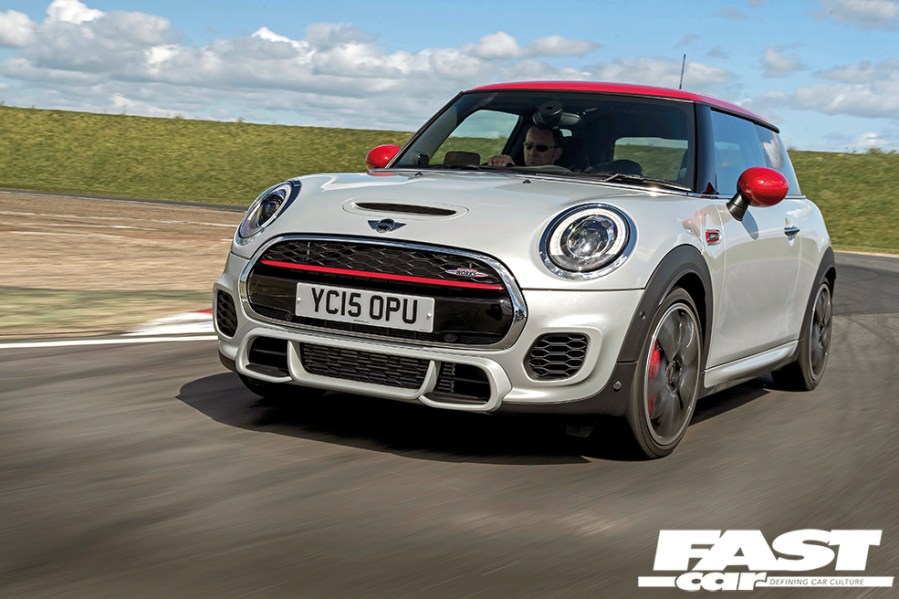Fast, fun and now available from £13,000, this buying guide takes a detailed look at the Mini F56 JCW, offering expert advice and must-know details before you buy this hot hatch.
First of the fast third-generation F models, was the 192bhp F56 Cooper S, that was available from launch in March 2014. It wasn’t long before Mini was alluding to an even higher performance range-topper, with the John Cooper Works (JCW) Concept making its debut at the start of 2015, at the North American Auto Show in Detroit.
While it might have been called a ‘Concept’, but as we were to find out later on, this Mini actually gave away the unique Aero body kit and alloy wheels of the production version, which had its UK launch in May 2015.
It is powered by the BMW B48, 2.0-litre, turbocharged, 16-valve engine, also used in the BMW 1-Series, 3-Series, 5-Series and the X3 off-roader. Auto only for the first couple of months of F56 JCW production, the gearbox itself was the same, slick six-speeder as fitted to the rest of the F56 Mini range, but with JCW-specific software. Auto or not, the F56 JCW boasted 228bhp, a licence-losing top speed of 153mph, and 236 lb.ft of torque. Acceleration to 62mph took just 6.1 seconds, yet it was still capable of achieving a 49.6mpg fuel consumption figure.
The six-speed manual version of the JCW boasts the same 228bhp as the auto, but acceleration to 62mph is 0.2 seconds slower at 6.3, plus it drinks more petrol, with a 42.2mpg figure. Slightly slower and somewhat thirsty, but Mini enthusiasts tend to favour the more involving manual.
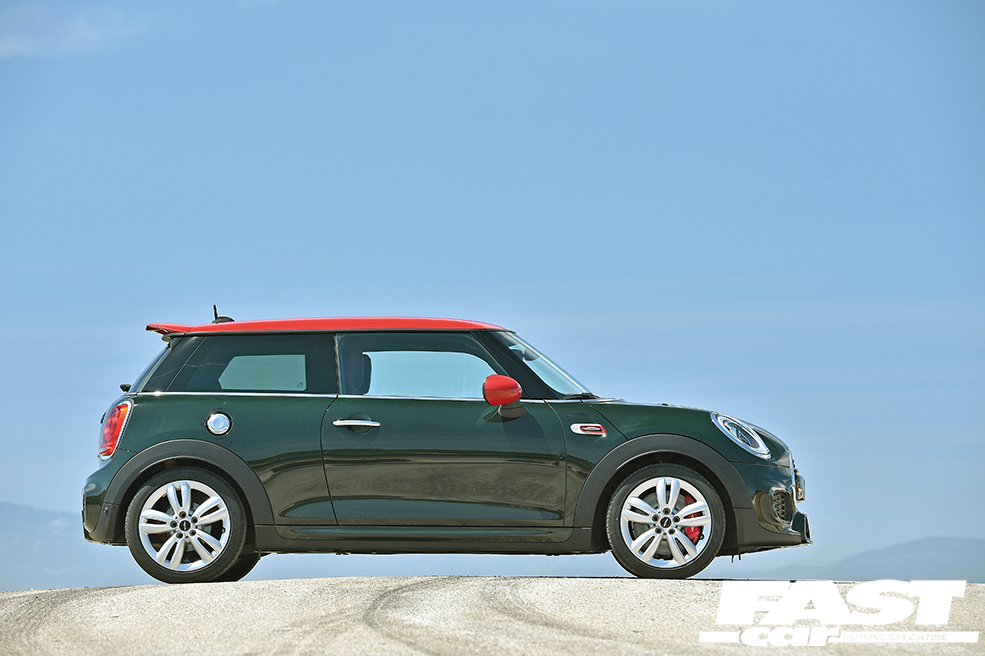
Mini F56 JCW special editions
Probably the most interesting development of the Mini F56 JCW hatch, since its launch in 2014, is the Challenge limited edition. Developed by a skunkworks team of Mini engineers at the Oxford factory and journalists from EVO magazine, this JCW was produced as a road version of the UK MINI CHALLENGE race car. As thus, it was fitted with upgrades from suppliers of the race series, including adjustable Nitron coilover dampers, a proper Quaife limited slip differential, plus Team Dynamics wheels with Michelin Pilot tyres. The result was 50 cars sold at £32,000 each, which are highly prized by their owners and are likely to be a future collector’s item.
The start of 2018 saw the Mini hatch get its mid-life or LCI (Life Cycle Impulse in BMW language) facelift, with trim changes, new colours and more options. You’ll spot a face-lifted F56 JCW by their brighter new front lights with full circular halo DRL and the Union Jack rear lights.
However, the JCW hatch was only available for a short time after the facelift, as it wouldn’t meet the stricter Euro 6d-TEMP emissions standard, part of changes resulting from the introduction of the Worldwide Harmonised Light Vehicle Test Procedure or WLTP legislation. This meant that the Mini F56 JCW hatch went on an enforced six-month hiatus.
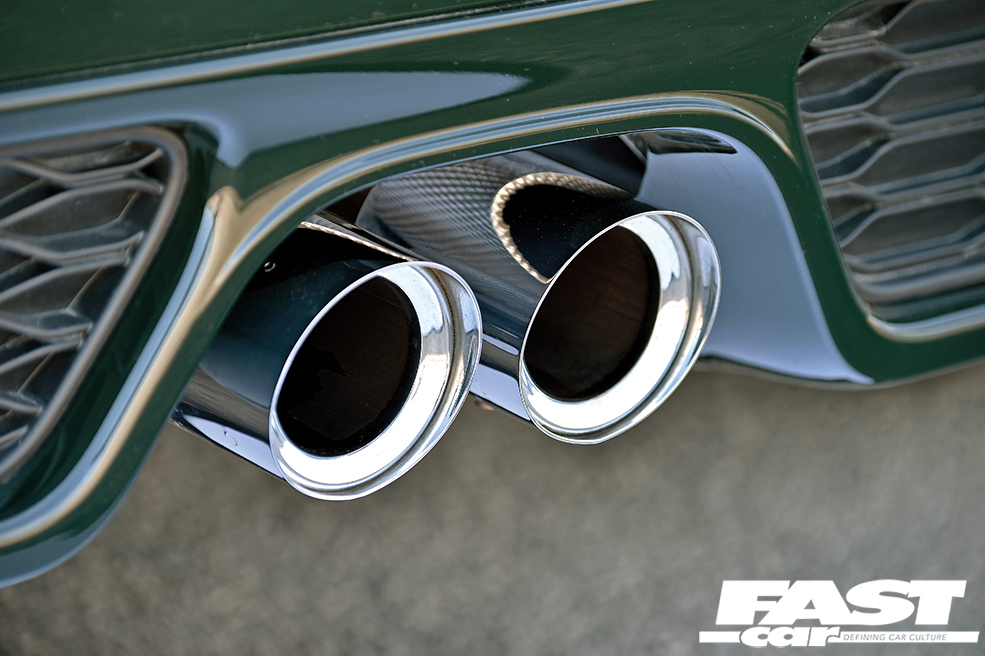
The latest version, now equipped with a petrol particulate filter, was available from March 2019. At the same time, specifications were enhanced, with Piano Black exterior and interior trim, Dinamica Leather trimmed front bucket sports seats, and 17in Track Spoke alloy wheels all added.
Want to find out more about the fastest modern Mini hatch? Read on for tips on how to buy the best.
What to look for when buying a used Mini F56 JCW
Transmission
All F56 JCW hatches were fitted with six-speed automatic transmission for the first three-months of production, the same gearbox that’s fitted to standard models. However, the fastest Mini auto has JCW specific software, which includes a difficult to engage launch control function. More popular with the hot hatch purists, is the six-speed manual transmission.
It is a favourite with enthusiasts, because it’s a more involving drive. There is no standard limited slip differential, instead a clever torque-vectoring traction control system is in place to stop the front wheels spinning. If you’re adding more performance, or going on track, fitting a proper Quaife limited-slip differential is a better option – as the Challenge limited edition proved. Whether you choose automatic or manual transmission, problems are rare, but watch for any modded automatic models, as we have heard of failures on poorly remapped cars.
Brakes
Check the documents for evidence of regular brake fluid changes. The massive standard vented discs (335mm at the front!), plus Brembo made four-pot calipers are more than a match for the JCW’s performance, plus upgrades such as performance brake pads are affordable. Check the condition of the discs when buying, especially with the track-focussed Challenge.
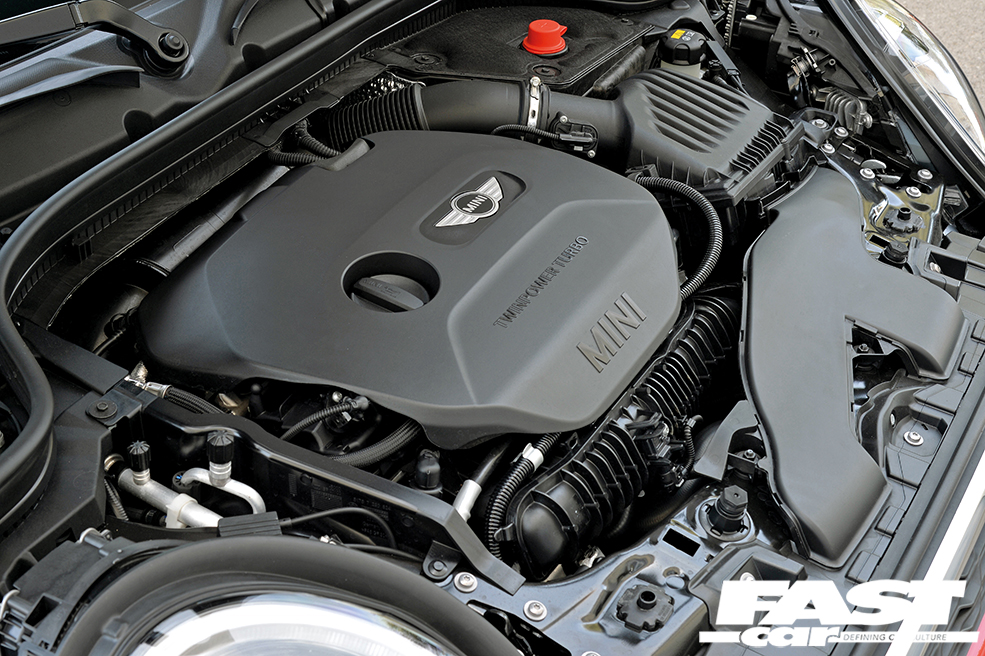
Mini F56 JCW B48 Engine
The F56 JCW is powered by a 2.0-litre B48 turbocharged in-line four, from the same engine family as the rest of the third-generation Mini range launched back in 2014. The B48 is an under-square design, with both the block and head made from aluminium, with other state-of-the-art-features including a twin-scroll turbocharger, direct injection, variable valve lift (Valvetronic) and variable valve timing (Double VANOS).
Thankfully, the B48 doesn’t appear to be affected by problematic crank bearing or oil solenoid issues on early F56 Cooper and Cooper S models. In fact, even though it’s easily remapped to over 300bhp, with simple bolt-on supporting upgrdaes – the only mechanical issues we’ve heard of with the B48 were some problems with the injectors and some odd air leaks. However, if you’re buying privately or from an independent dealer, make sure you do the usual checks. Firstly, make sure there’s evidence of regular maintenance in the service book. Then, before you even start it, make sure you check there’s plenty of the black stuff! Engine mods start at £350, from Mini specialist Lohen, for a CravenSpeed induction kit, that not only releases some more horses, but sounds great too.
Move up to £1,500 for Lohen’s Performance Pack, which includes a Forge Motorsport performance intercooler, and a Manic Motorsport stage 1 tune, equalling 10hp more. One of the approved JCW Pro performance parts for the F56 range is the Bluetooth exhaust, which is standard on the Challenge limited edition, but fitted as an accessory elsewhere. It works by opening a flap in the exhaust via remote, to make the fastest Mini a whole lot louder – although its loudest setting is only supposed to be used on the track!
Suspension
The JCW hatch’s performance is hot, and its precise steering and entertaining handling go well with this – although the ride on the optional 18in wheels can be a bit firm. This sharp handling is the result of standard MacPherson struts, coil springs, an anti-roll bar and of course the rear Z-axle. Adaptive dampers are a popular option, but the firmest Sport mode is probably best left for the track, as it never feels settled on the road.
Thankfully you can mix and match driving modes with dampers settings The standard passive dampers are as stiff, but are probably better for modification. The JCW hatch’s handling is also susceptible to tyre choice, the OEM Pirelli tyres are least favoured by owners. The Challenge limited edition shows what modifications could be done, with the standard fit adjustable Nitron coilover dampers. Coilovers will also fix the standard JCW hatch’s lofty stance – especially at the front.
Some owners report a knocking sound from the front suspension when going over bumps, this is said to be fixed when replacing the lower control arms.
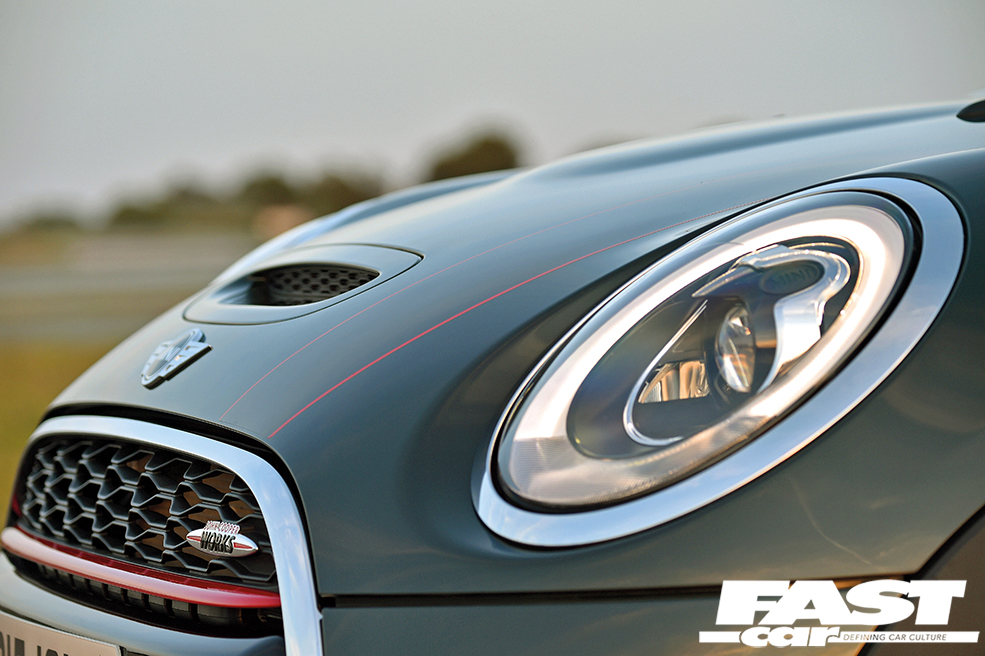
Mini F56 exterior check points
Outside, the biggest giveaway that you’re looking at the F56 JCW is the amount of grilles! On top of the meshed-style upper and lower front ones, the JCW does away with the fog lights, that space taken up with an extra pair. The one on the nearside actually functioning to keep the uprated version of the 2.0-litre, four-cylinder engine, already powering the Cooper S, cool. Still, the large LED front headlights are powerful enough for you not to miss the fogs.
Elsewhere, at the side, there are colour-coded side skirts. At the back, like the front there are more grilles on each of the edges of the rear apron. Plus, the chrome-tipped centre exit exhaust, large rear spoiler and LED rear lights. There are also unique colours and combinations via the Mini Individual programme, and more popular colours such as Rebel Green, which almost looks black in some lights. The Challenge limited edition is identified by its carbon fibre details, such as the mirror caps, plus the White Silver paint, combined with a black roof and black viper stripes.
The 2018 MINI hatch LCI facelift, has new front and rear lights, trim changes, new colours such as Solaris Orange and more options including the Piano Black exterior pack, that eventually became standard. With the oldest F56 JCW just four-years old, rust isn’t a problem on this Mini, but watch for misted headlights, swirl marks and light scratches.
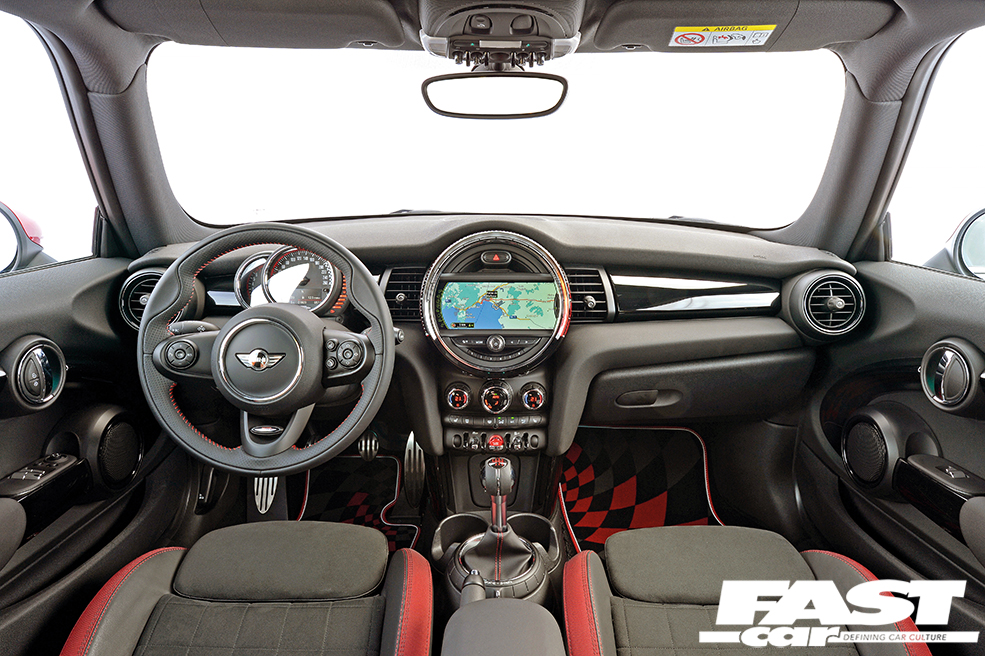
Interior
Inside, Mini worked hard to improve the premium feel to the F56 hatch’s interior. The soft-touch plastics and interior trim finishes are the equal of any model from BMW. After the dinner-plate sized speedo of the R56 (check out our R56 Mini buyer’s guide), the biggest change is in fact that the speedo has moved from the centre of the dash and been combined with the steering column mounted rev counter. However, speedo or not, the central circular design theme continues with the F56. Although it’s replaced by a central colour screen, that now houses the infotainment system. You’ll either smile or frown at the emotion LED lights that change colour and pattern according to function or speed. The extra 28mm on the wheelbase means more room, but access is still tight.
There’s also a 211-litre boot – up 61 over the R56. The extra space is noticeable and there’s also a clever adjustable boot floor too. There are two types of sports seats, although the single-piece, optional high-backed style are more supportive in our opinion. Interior issues are few, but be aware of door seals that can rub the paint off the door shuts and squeaking front seats.
Electrics
As you’d expect for a newish Mini, electrical problems are rare – but not unheard of. We are aware of a few isolated cases of issues with the sat-nav system. More common, are problems with the horn push not working. This is located in the centre of the steering wheel with the airbag.
Identity
The fact that the F56 JCW hatch pushes out almost 230bhp, makes it most attractive to thieves. So, make sure you still do all the proper checks before buying. Once you’ve checked that the VIN on the logbook matches the one in the windscreen, then we’d suggest investing in a proper history report before handing over any cash – especially if you’re buying privately! The last thing you need, is to find out later, that it has been stolen, written-off, or has finance outstanding.
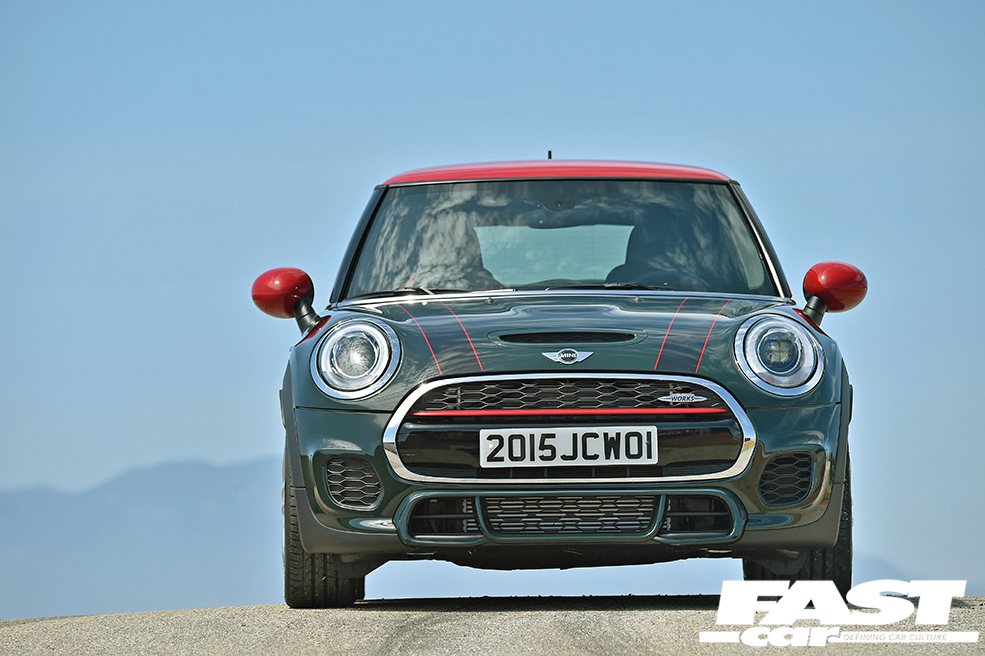
How much should you pay for a Mini F56 JCW?
£13,000 – £15,000
This is the starting point for F56 JCW hatches, with mileages up to 50,000. Earliest cars are from 2015, but 2016, 2017 and some 2018 models fall into this category too.
£15,000- £18,000
Later, very low mileage 2017 and 2018 cars are here, plus LCI facelift cars from 2019/2020/2021
£18,000 – £23,000
Higher spec, LCI facelift 2019 and 2020 cars with low-mileage start here. Super rare, lowest mileage, Challenge limited edition models start at around £25,000, at independents, with under 10,000 miles.
£24,000 +
Delivery mileage, highest spec 2020, and 2021 models start from around £26,000.
Tech Spec: Mini F56 JCW
Engine: 1988cc, turbocharged four-cylinder
Power: 227bhp @ 5200-6000rpm, 236lb ft @ 1250-4800rpm.
Transmission: Eight-speed automatic, front-wheel drive
0-62mph: 6.1 seconds
Top Speed: 152mph
MPG: 40.9-42.8mmpg
Weight: 1275kg
Guide from Performance Mini Magazine. Words: Martyn Collins

